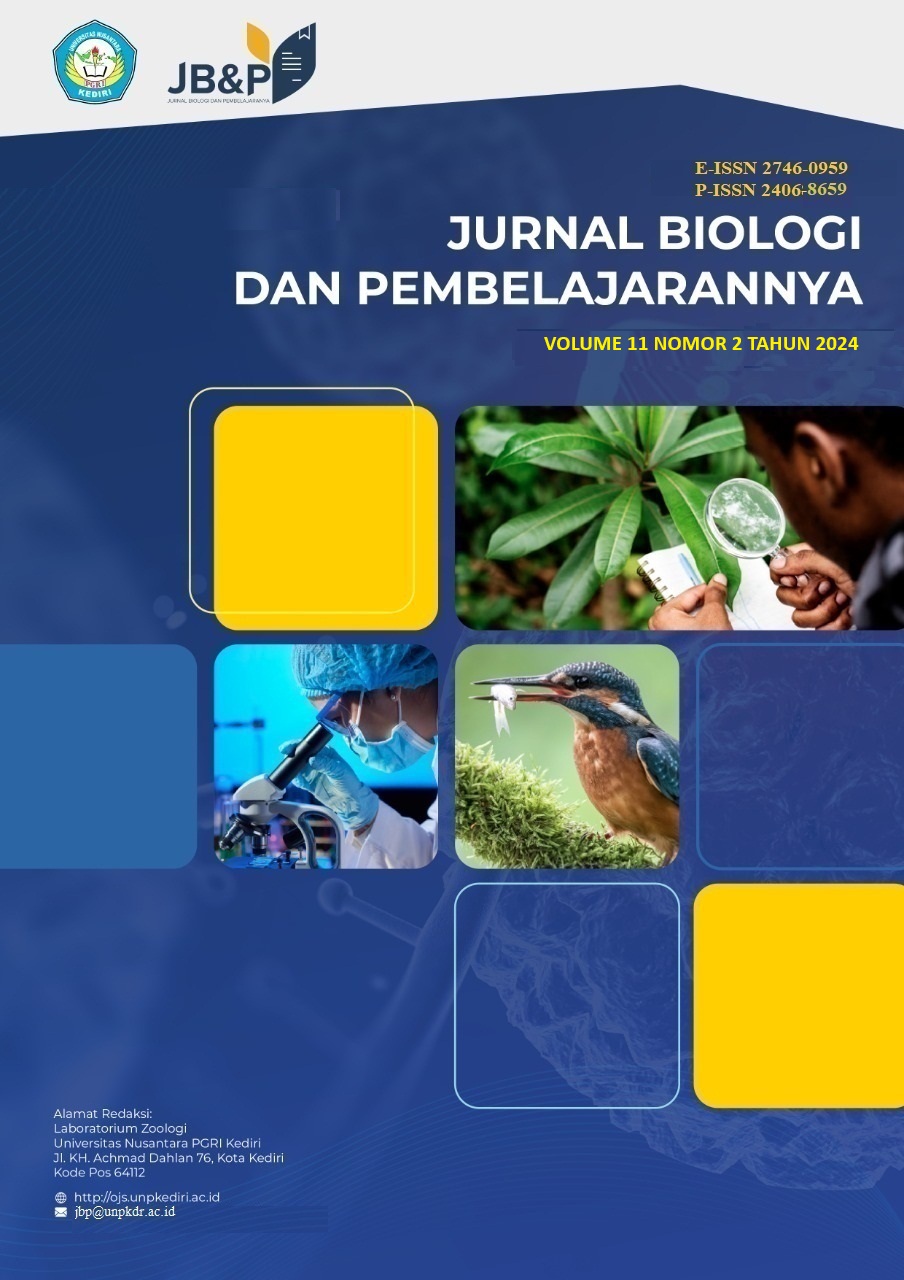The Literature Review: Taksonomi dan Morfologi Syzygium
Literature Review: Taksonomi dan Morfologi Syzygium
DOI:
https://doi.org/10.29407/jbp.v11i2.23301Keywords:
biodiversity, syzygium, taxonomy, Classification, morphologyAbstract
Syzygium is the largest genus in the myrtle family (Myrtaceae) with about 1200 species. Syzygium ranks 16th out of 57 genera of flowering plants, or even in the top 10. Syzygium is found in tropical or subtropical vegetation, tropical rainforests, lowlands, mountains, swamps, savannas and limestone forests. The fruit of the genus Syzygium is something that is most widely used and also cultivated, for example S. aqueum, S. cumini, S. jambos, and S. malaccense are important and commonly cultivated. The development of taxonomy in living things is marked by the popularity of the scientific naming of an organism with the binomial nomenclature system by Carrolus Linnaeus in 1758. The first time the name Syzygium was adopted with the name Suzygium. Syzygium etymologically comes from the Latin syzygia and from the Greek Sysygos which means yoke together. In Species Plantarum, five species are included which are currently accepted as Syzygium in three separate genera including Caryophyllus L., Eugenia L., and Myrtus L. Currently, there are two views of thought for the Syzygium classification scheme approach. The DNA sequence phylogeny approach and morphological evidence in its classification, support the generic concept of Syzygium which includes all, but with infrageneric classification to reflect the evolutionary relationships between clades. According to them, the molecular evidence gathered to establish a robust phylogenetic genera, the broad concept of Syzygium will temporarily eliminate the need to create more new genera to accommodate new morphological characters.
References
Adhayanti, Ida, Nurisyah Nurisyah, and Tajuddin Abdullah. 2019. “Aktifitas Uv Protektif Ekstrak Buah Jamblang.” Media Farmasi 15(1):79. doi: 10.32382/mf.v15i1.858.
Aprillia, Jelita Zahra, Wisanti Wisanti, and Eva Kristinawati Putri. 2021. “Kajian Taksonomi Numerik Tiga Jenis Syzygium Berdasarkan Karakter Morfologi.” LenteraBio : Berkala Ilmiah Biologi 10(1):40– 50. doi: 10.26740/lenterabio.v10n1.p40-50.
Chungu, Donald, Marieka Gryzenhout, Ambayeba Muimba-Kankolongo, Michael J. Wingfield, and Jolanda Roux. 2010. “Taxonomy and Pathogenicity of Two Novel Chrysoporthe Species from Eucalyptus Grandis and Syzygium Guineense in Zambia.” Mycological Progress 9(3):379–93. doi: 10.1007/s11557-009-0646-9.
Merrill, E. D., and L. M. Perry. 1939. “The Myrtaceous Genus Syzygium Gaertner in Borneo.” Memoirs of the American Academy of Arts and Sciences 18(3):135. doi: 10.2307/25058505.
Nair, K. N. 2017. “The Genus Syzygium: Syzygium Cumini and Other Underutilized Species.” CRC Press.
Ramírez, Fernando, and Jose Kallarackal. 2019. “The Phenology and Potential Ecological Associations of Magenta Lilly Pilly (Syzygium Paniculatum Gaertn) a Native Vulnerable Australian Tree Growing in Bogotá, Colombia.” Arboricultural Journal 41(4):191–211. doi:10.1080/03071375.2019.1642047.
Rana, Inder Singh, Aarti Singh Rana, and Ram Charan Rajak. 2011. “Evaluation of Antifungal Activity in Essential Oil of the Syzygium Aromaticum (L.) by Extraction, Purification and Analysis of Its Main Component Eugenol.” Brazilian Journal of Microbiology 42(4):1269–77. doi: 10.1590/S1517-83822011000400004.
Suparman, Suparman, Nurhasanah Nurhasanah, Bahtiar Bahtiar, and Sri DAS. 2020. “Studi Literasi Taksonomi Dan Penelusuran Spesimen Lektotipe Cengkih (Syzygium Aromaticum (L.) Merr. & Perry).” Techno: Jurnal Penelitian 9(1):363. doi: 10.33387/tjp.v9i1.1753.
Wardani, Novita Kusuma, R. Susanti, Retno Sri Iswari, and Arie Rusminingsih. 2022. “Pengaruh Lama Perendaman Dan Jenis Pembungkus Terhadap Kadar Etanol Tape Ketan Novita.” Life Science 11(1)
Downloads
Published
Issue
Section
License
Authors who publish with this journal agree to the following terms:
- Copyright on any article is retained by the author(s).
- The author grants the journal, right of first publication with the work simultaneously licensed under a Creative Commons Attribution License that allows others to share the work with an acknowledgment of the work’s authorship and initial publication in this journal.
- Authors are able to enter into separate, additional contractual arrangements for the non-exclusive distribution of the journal’s published version of the work (e.g., post it to an institutional repository or publish it in a book), with an acknowledgment of its initial publication in this journal.
- Authors are permitted and encouraged to post their work online (e.g., in institutional repositories or on their website) prior to and during the submission process, as it can lead to productive exchanges, as well as earlier and greater citation of published work.
- The article and any associated published material is distributed under the Creative Commons Attribution-ShareAlike 4.0 International License













